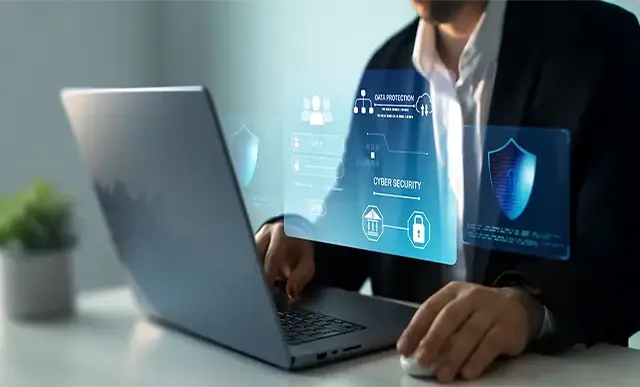Businesses are realising the importance of implementing cybersecurity to protect their IT systems. For manufacturers, this includes data in their ERP system and external systems like IoT (Internet of Things). A manufacturing ERP system contains sensitive information ranging from supplier and customer information to critical intellectual property information in BOMs (Bill of Materials). Because of this, it can be a prime target for cybercriminals due to the sensitive data stored. Cybersecurity in ERP has therefore become a focus for manufacturers.
How cyber-attacks can affect business
Cybercrime taps into the vulnerability of business systems and can pose multiple threats in the supply chain, billing, inventory and production.
Various sources have put the average cost of recovering from a ransomware attack as US$1million – US$4million. Attacks can affect the prices that customers pay as well as their outstanding orders, and so threaten the manufacturer’s reputation.
Components of an ERP to protect
Protecting the data in an ERP system involves shielding the various components of the system. The components are:
- core ERP system: the component that provides the capability for managing core business processes, such as financial management, inventory management, supply chain management, and customer management;
- database: the data of an ERP is stored in a centralised database. Everything from customers, suppliers, inventories, transactions, product information and data obtained from external systems is stored there;
- reporting and analytics: an ERP contains data used for reporting and analytics that enables users to analyze and get insights into business operations;
- integration systems: every manufacturer uses some data from other systems with its ERP, so integration protection is important.
Six ways to protect data in an ERP
Implementing cybersecurity in ERP means looking at various strategies. ERP vendors provide the tools and recommend best practices to protect their ERP solutions.
- Software updates: security technologies keep evolving to address new threats, therefore, businesses need to protect their ERP system by installing the latest version of the ERP software. Besides enabling the latest features, newer software versions remove vulnerabilities that may put a business at risk.
- Access rights: ERP software includes a hierarchy of access rights which can be applied across an organization to restrict users’ access to only those areas that they use. However, many companies avoid the effort to apply this hierarchy and give employees full access rights. This opens up opportunities for cybercriminals to access sensitive information. Manufacturers should instead ensure that employees are provided with role-based access and form part of groups with associated security and clearance authorizations.
- Multi-factor authentication: one-factor authentication, or single sign-on, of a userID and password is now outdated and opens another opportunity for malicious access. Instead, businesses need to have an extra layer of security with multi-factor authentication involving a security method where users must provide multiple forms of verification (like a password plus a code from a phone) to access a system, adding an extra layer of protection.
- Network security: the ERP system should be protected from network-based attacks and denial-of-service attacks by using network security measures. Firewalls, intrusion detection and prevention systems, and routine network scans are some examples of the security measures that fall under this category.
- Protecting external data: sensitive data coming from external sources should be protected by encryption while it is in transit.
- User education: It is vital for employees to understand potential dangers and learn best practices for using the ERP system. They need to be aware of maintaining good password hygiene and recognizing social engineering attempts. In a recent survey it was revealed that 49% of respondents use the same login credentials for multiple work applications, and 36% use the same credentials for personal and professional accounts.
Cybersecurity in ERP
It is essential for businesses to implement a comprehensive security strategy that includes regular security assessments, vulnerability testing, employee training, and stringent access controls to reduce the impact of cybersecurity threats and protect their ERP solution from security breaches.
ERP security is achieved by getting the security of the composite elements right. The biggest challenge is likely to be identifying these components. Companies must also recognize that their employees are their most significant vulnerabilities.
Learn more with SYSPRO here.









